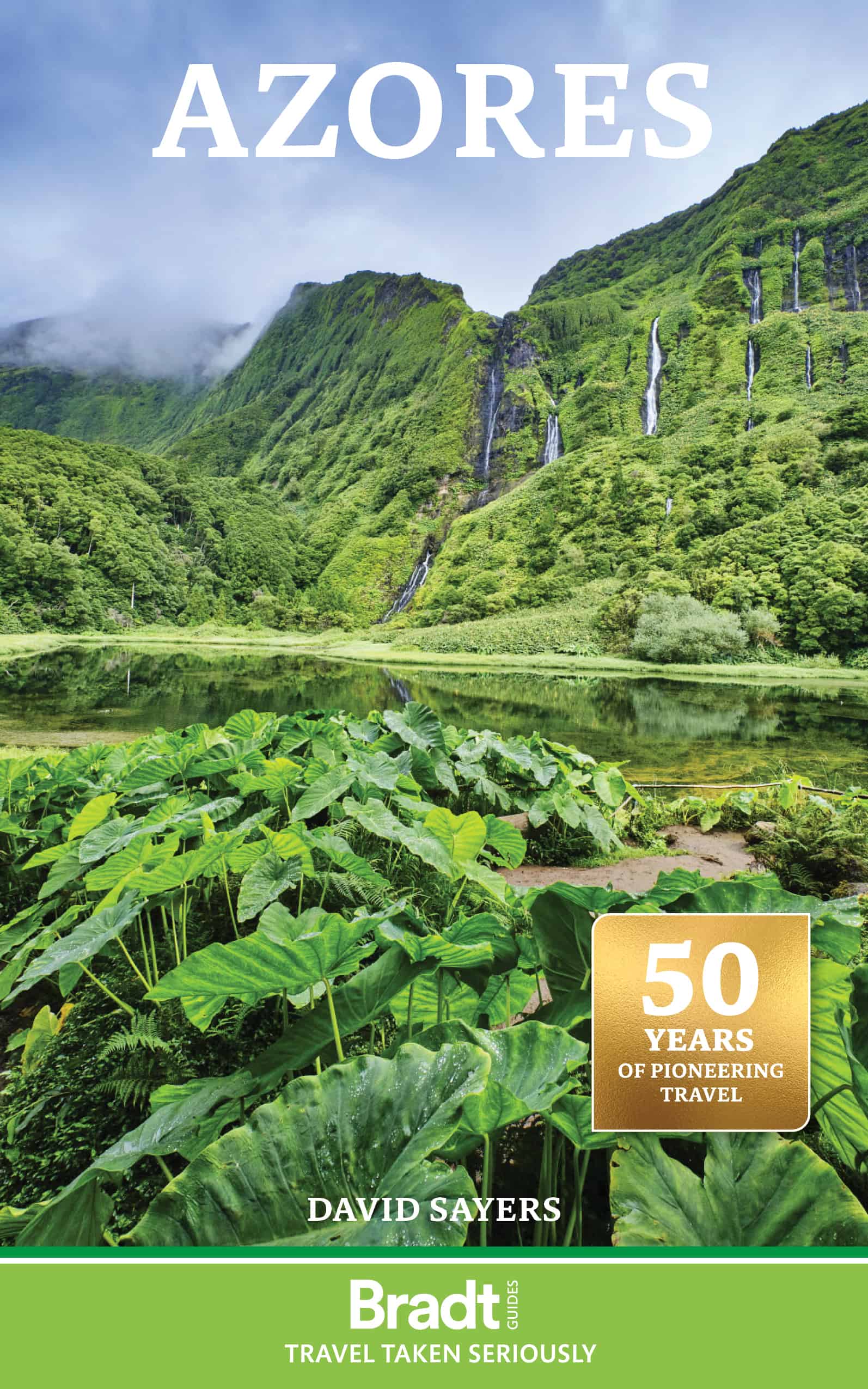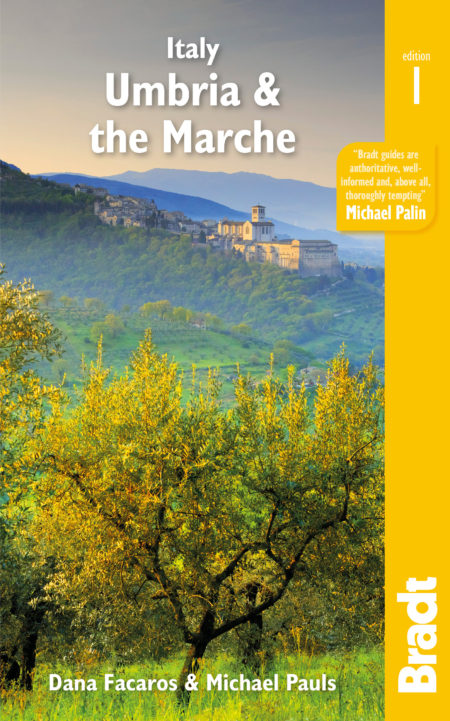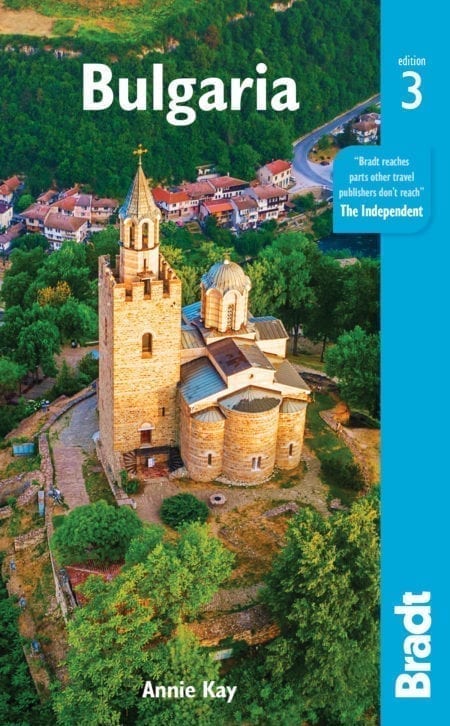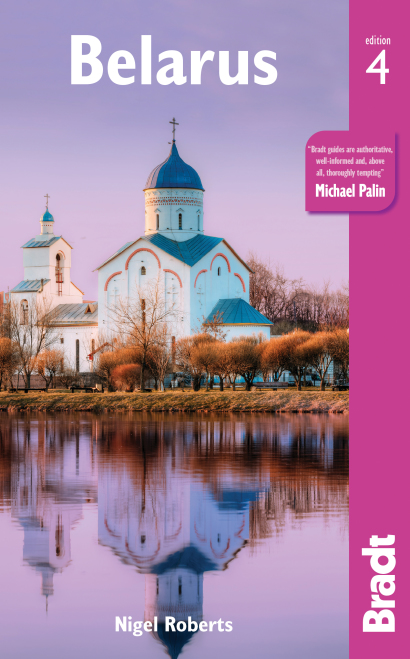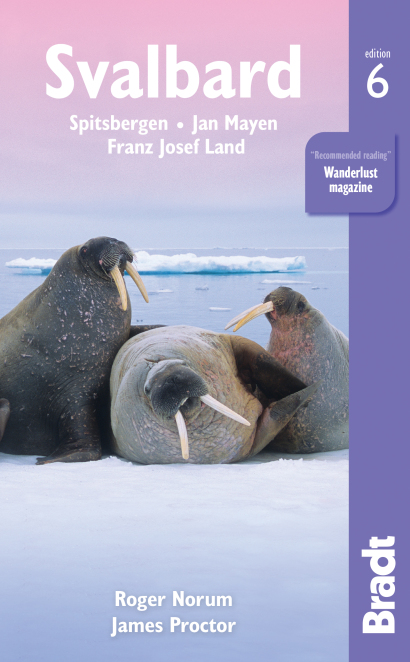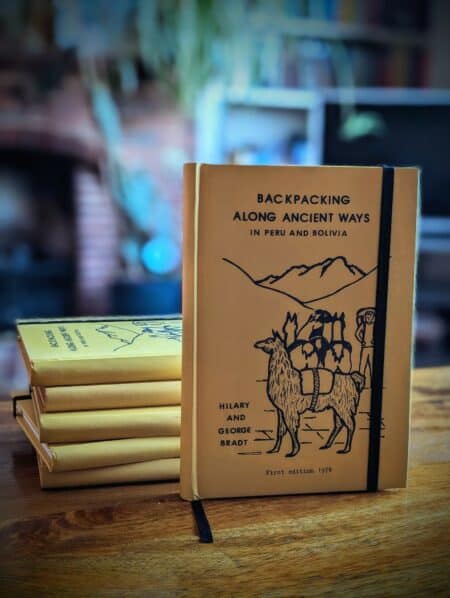Bradt Azores Guidebook
Azores travel guide. Expert tips and holiday advice including itineraries and activities for all nine islands, Ponta Delgada and Horta highlights, walking routes, endemic flora and wildlife. Features UNESCO Biosphere Reserves, Furnas, Santa Maria, São Miguel, Graciosa, Terceira, Faial, Angra do Heroísmo, whalewatching, cycling and horseriding.
Size: 135 X 216 mm
Edition: 8
Number of pages: 320
About this book
Now in its eighth edition, Bradt’s Azores remains the only comprehensive guidebook to this nine-island archipelago – a mountainous, nature-lover’s wilderness perched in the mid-Atlantic at the western extremity of Europe.
One of the world’s best whalewatching destinations, a geological curiosity and – more recently – a mid-Atlantic adventure playground, the Azores have become ever more accessible thanks to low-cost European flights. The nine islands making up the Azorean archipelago share volcanic origins, albeit from different eras, so each rugged landscape boasts a unique feel. The approach to tourism also differs from island to island: while São Miguel welcomes a rising number of cruise ships and international flights, and Faial is a busy hub for trans-ocean yachts, tiny Corvo and gentle Santa Maria remain almost untouched. The Gulf Stream guarantees a mild climate and plenty of greenery: a pleasant environment for this easily accessible, safe, welcoming and authentic mid-haul destination.
With each island treated to its own chapter, Bradt’s Azores provides all the details a visitor needs for a rewarding, enjoyable visit to an archipelago where cows outnumber people. Author and expert botanist David Sayers shares his deep knowledge about flora, fauna and geology that are integral to getting to know the islands. This new edition – thoroughly updated by prolific guidebook author Tim Burford – strengthens coverage of the land- and sea-based activities that have become a significant part of the Azores’ attractions this century while providing the most recent practical information such as where to stay and eat in every price band.
Five centuries of human history are well documented in a host of museums spread across the islands, which explain the fluctuating fortunes and strategic importance of the archipelago through the centuries. Attractive architecture, carefully preserved festivals, four islands with UNESCO Biosphere Reserve status and thermal pools complete what is a very agreeable picture. Little wonder then that the Azores attracts geologists, birdwatchers, whalewatchers, horseriders, walkers, mountaineers bent on climbing Portugal’s highest peak (on Pico island), divers, surfers, sailors, mountain-bikers and canyoners – indeed anyone who loves nature or the great outdoors in all its forms.
Before ordering ebooks from us, please check out our ebook information.
About the Author
David Sayers is a horticulturist and author who studied at Royal Botanic Gardens Kew and overseas, and has spent a lifetime exploring the world for plants. Running a travel company for 26 years, in 1984 he pioneered the first walking/botanical tour to the Azores. Sayers has been going back ever since, enjoying numerous excellent hikes on all nine islands, and has led many tours, sharing his enthusiasm for Azorean life. As the islands have gradually joined the modern world without losing their native charm, Sayers’ journey has been one of constant discovery, finding new walks, new eateries and new interests. One of his keenest memories was offshore, spotting fin, blue and pilot whales in one magical morning off Ponta Delgada. Sayers has also helped restore several of São Miguel’s historic gardens, which are now visitor ‘must-sees’. Even after a lifetime of worldwide travel, the Azores remain his favourite destination.
